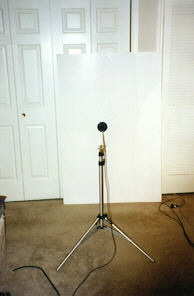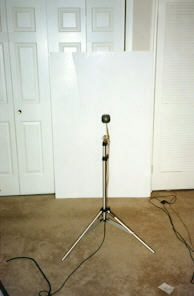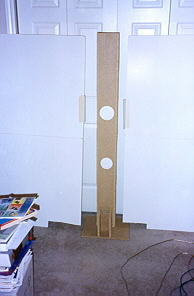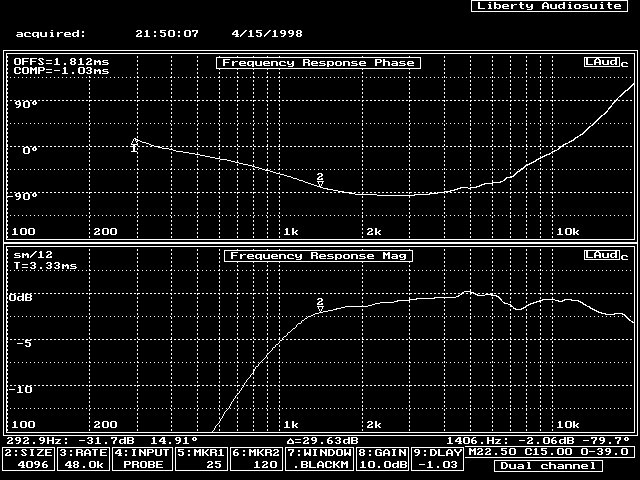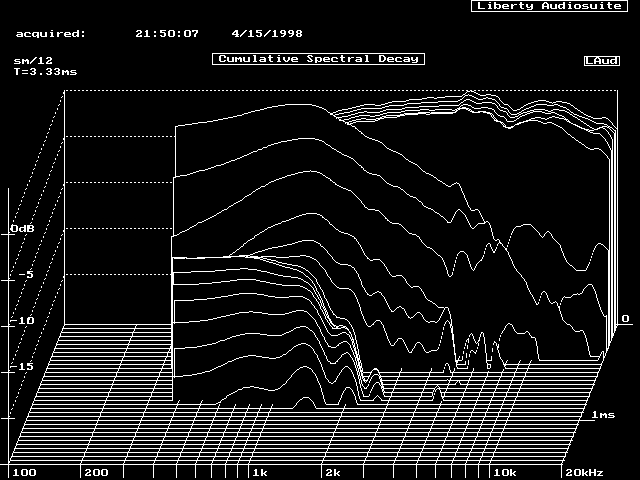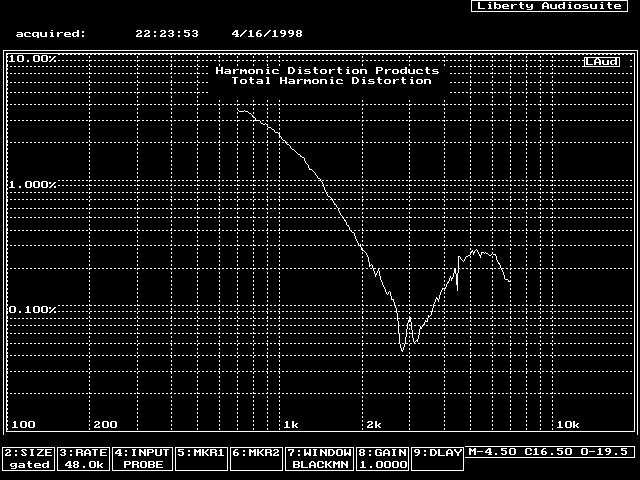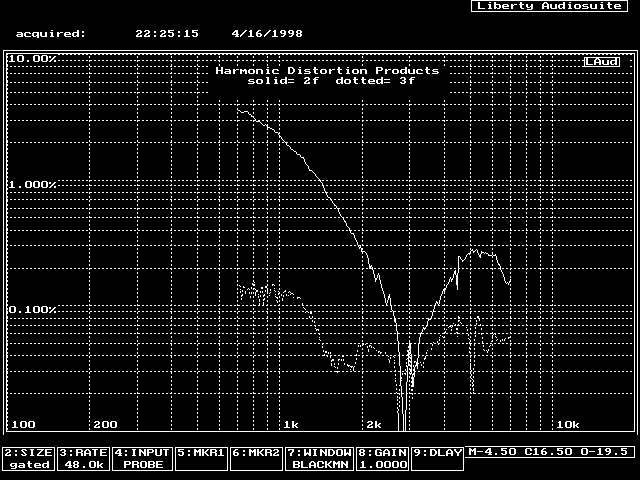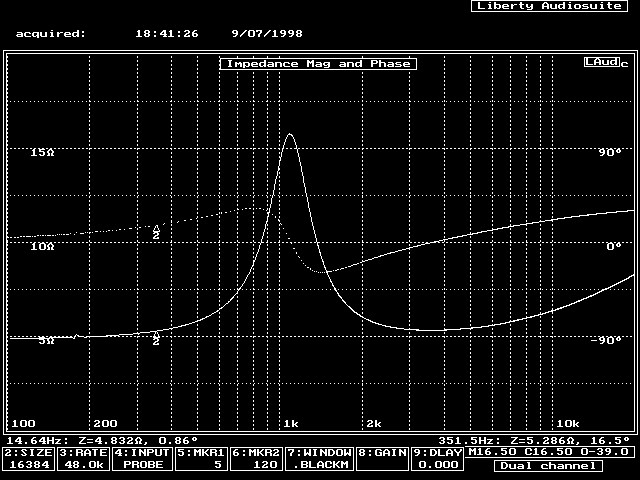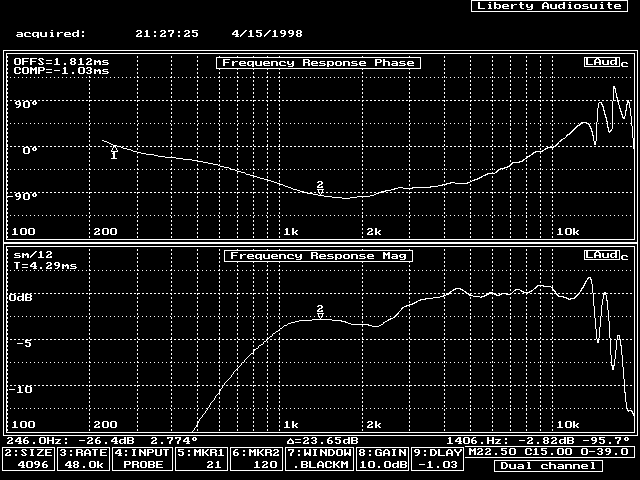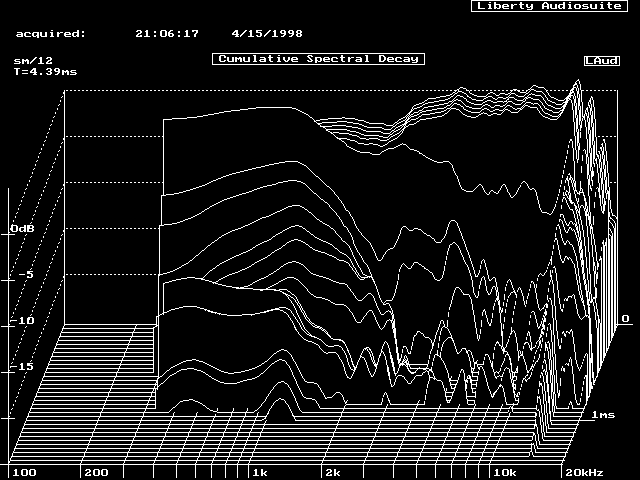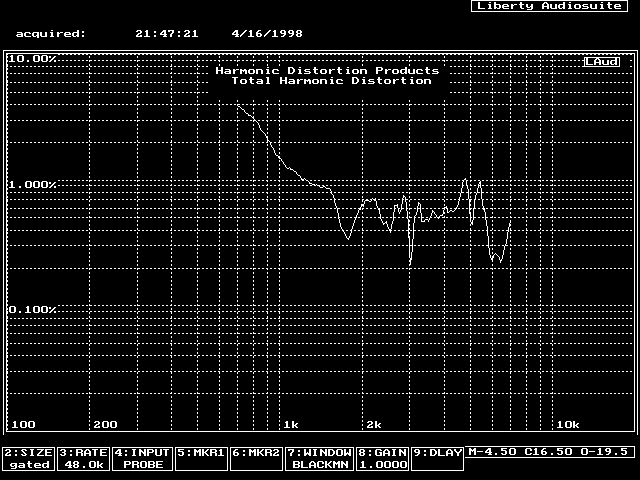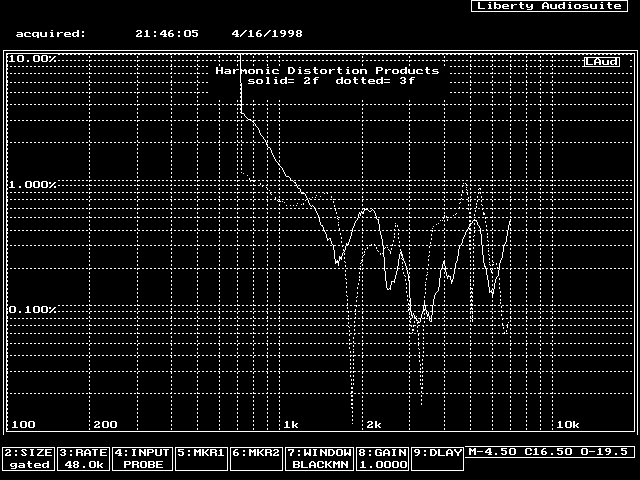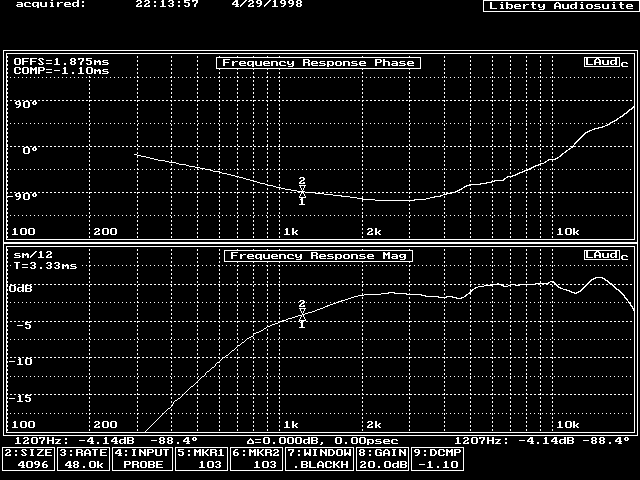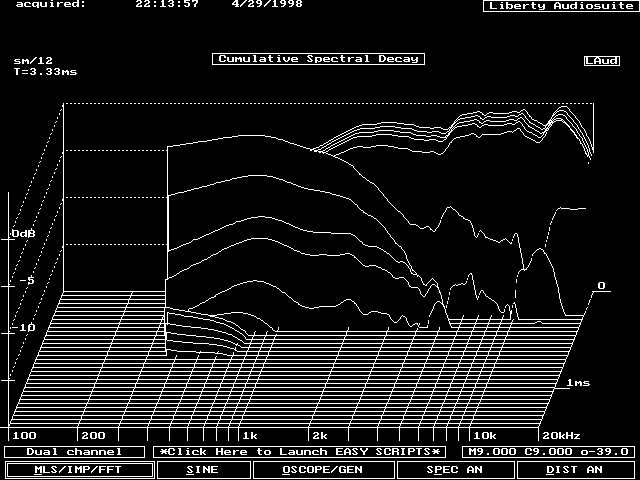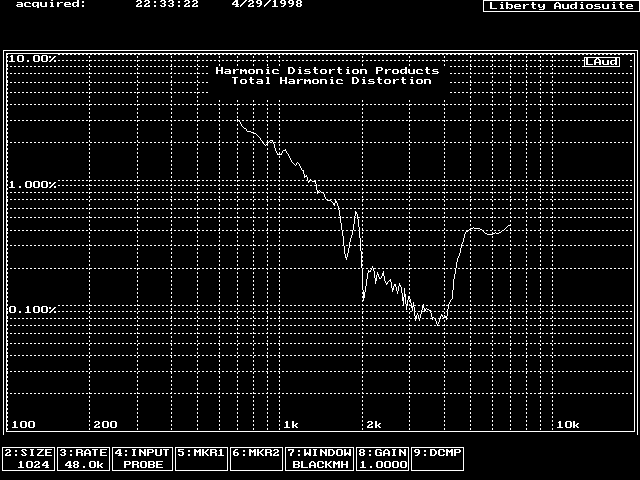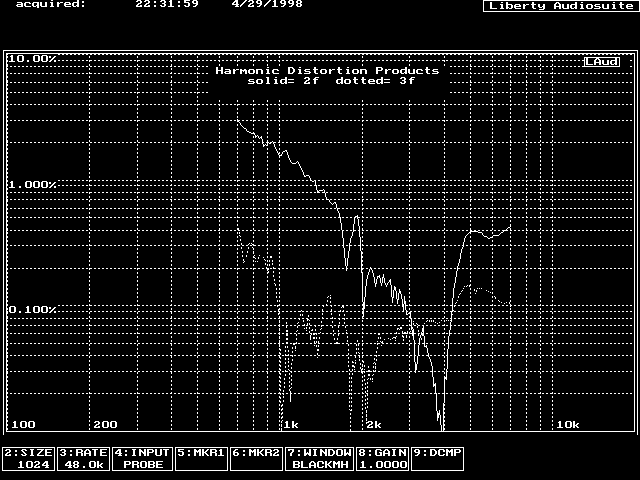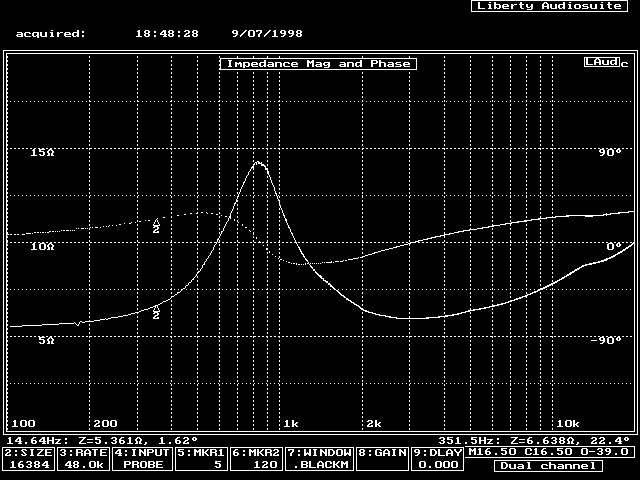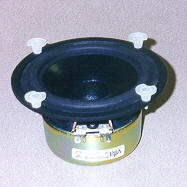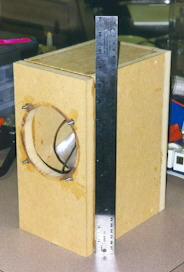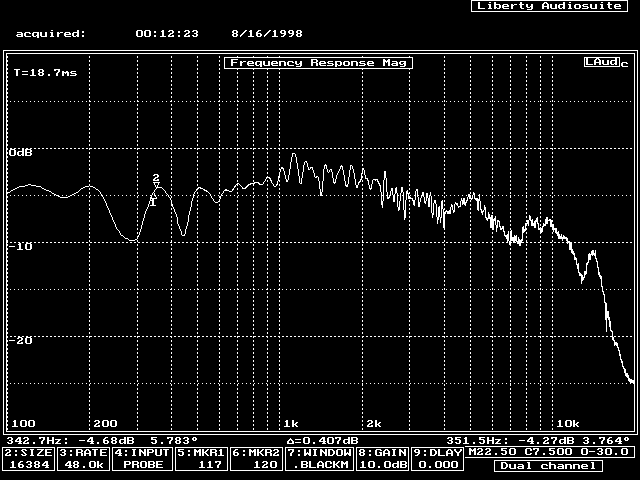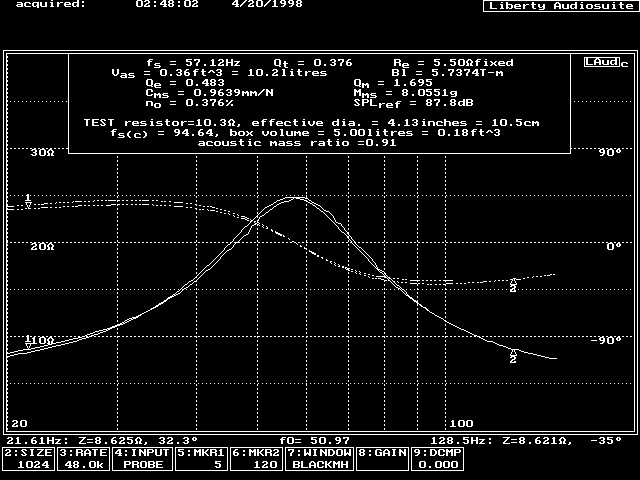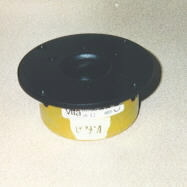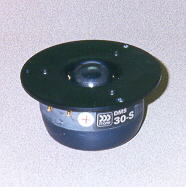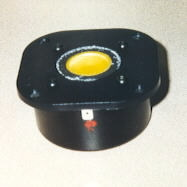GRAPH COMING SOON
This project has many possible applications, and as many possible low frequency designs. Two possible designs are illustrated in the graph above (a Bode plot). The yellow line corresponds to a 7.3 liter sealed box tuned to a Butterworth alignment. However, the low frequency cutoff is only 110 Hz, which is not low enough for use as a THX center channel (80 Hz is the spec). If connected to a sub-woofer, the cross-over would have to take into account the natural high-pass function, or be set to a high frequency (at least 400 Hz). The blue line is a 15 liter vented cabinet with the port tuned to 63 Hz (a port 3″ in diameter about 7″ long). The low frequency cutoff is now less than 70 Hz!
Another design (that I don’t know how to simulate the response of), is a transmission line design. One quarter of a wavelenth at 55 Hz is 1.56 meters. Folded, the transmission line will be reasonably compact. The cone area is 80 cm2, thus, the line’s volume (for two drivers) as 25 liters. The final design will be significanlty larger due to the internal bracing used to form the acoustic labyrinth of a transmission line. But even if doubled, the total volume is less than 2 cubic feet. Most subwoofers are quite a bit larger.
A factor that weighs in favor of the tranmission line is the desire to make the front baffle very wide to minimize baffle diffraction. At the same time, the baffle needs to be tall enough to put the drivers about ear level. The minimum height for the latter requirement is about 42″. Using the golden mean, the cross section of the transmission line is 2.75″ by 4.5″. Maximimizing the baffle area means 2.75″ is the internal depth of the cabinet volume.
Using 3/4″ MDF the depth is deeper by 2.25″ for the double thickness front baffle and
single thickness rear wall. Each side of the 4.5″ wide line has half of a wall width (remember, the line is going to be folded). The exterior walls add an additional wall thickness to the total baffle width. My current plan is to use 3/4″ MDF or 3/4″ baltic birch / apple-ply for internal walls, 3/4″ MDF for the outer walls. The calculation is
However, a monolith is still not the final shape. (Yep, the dimensions are pretty close to 1 by 4 by 9!) An uneven baffle width will further reduce the affects of edge diffraction, possibly more so than attempting to make it wider.
